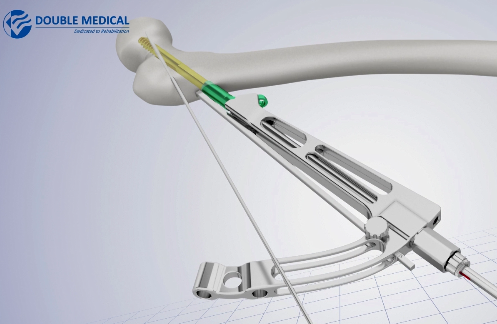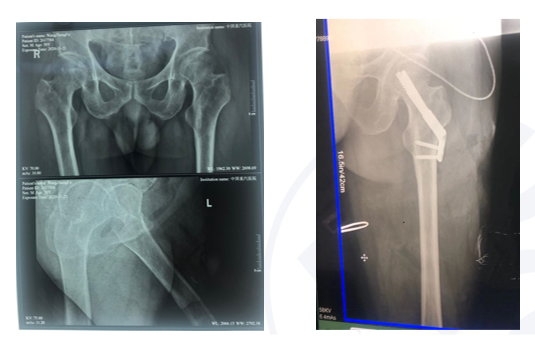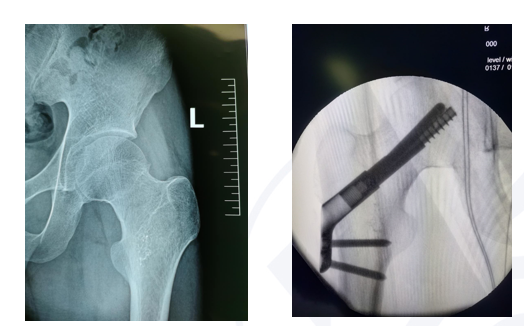Categories
Recent Posts

Q2: Is lag screw used fine in young people, but poor occlusal in patients with osteoporosis?
A:CCS Lag Screw is tapered thread,which is different from the parallel thread design of DHS. The tapered thread can better compact surrounding cancellous bone, and achieve good anchoring.
It is also feasible to place an Antirotation Screw before pressurize during the operation. The Antirotation Screw and the Lag Screw form a triangle at an angle of 5° to firmly anchor the cancellous bone.

Q3: It is feared (that) shortening occurs postoperation and it occurs on Synthes’s FNS. It is best to be firmly fixed after the operation without sliding pressure.
A:Postoperative sliding is to prevent the occurrence of nonunion, and it is not recommended to use rigid fixation.
CCS can also provides rigid fixation. The effect can be achieved by selecting the appropriate length of implants. The method is as follows: After confirming the correct position of the Guide Wire by fluoroscopy , measure the depth, the size and length of Lag Screw and Antirotation Screw should be selected according to the exact measurement length.
If choose postoperative rigid fixation, the specifications of Lag Screw and Antirotation Screw should be added 15mm on the basis of the measurement. For example: depth 80mm, if you choose postoperative rigid fixation, the Lag Screw length = Antirotation Screw length = 80mm+ 15mm=95mm.

Advantages:
1. Small Incision: Small size of the implants for small incision and easy insertion.
2. No External Protrusion: Eliminate the external protrusion of the implant and reduce soft tissue irritation.
3. Excellent Anti-rotation Stability and Pull-out Resistence: CCS Lag Screw and CCS Antirotation Screw provides rotational stability, pull-out resistence and hold force (5°divergence angle).
4. Two Compression Modes: Provide 10mm compression distance intraoperatively, and provide 15mm sliding pressure distance postoperatively.
5. Two Postoperative Mode: Provide postoperatively sliding and non-sliding compression options.
6. Integrative Insertion Handle: Serve for entire system, including CCS Fixation Plate, CCS Lag Screw, CCS Antirotation Screw, and 5.0mm Locking Screw.
7. Multiple Instruments: Develop a variety of instruments based on clinical needs, provide clinicians with the greatest convenience.


More Information: https://www.doublemedicalgp.com/compound-compression-system-ccs_p203.html